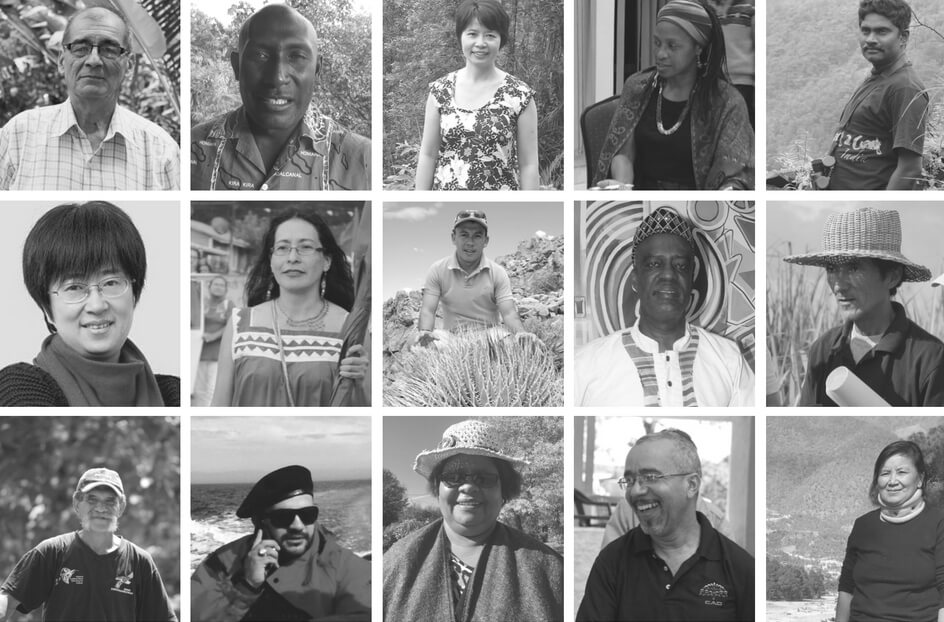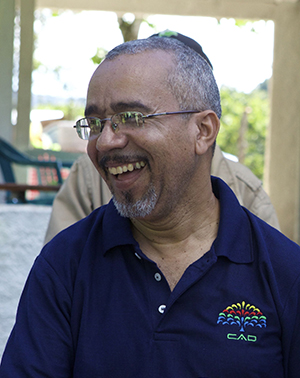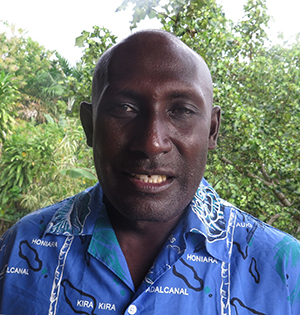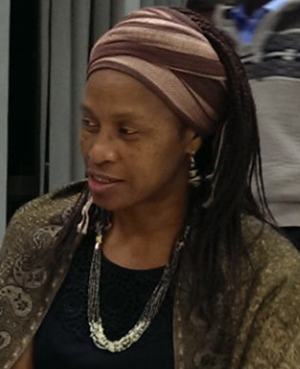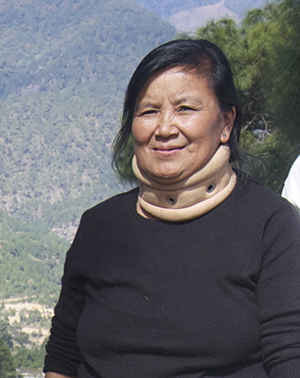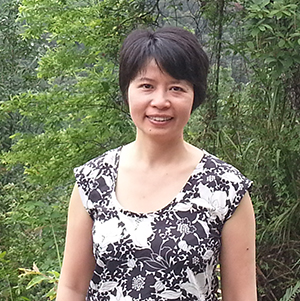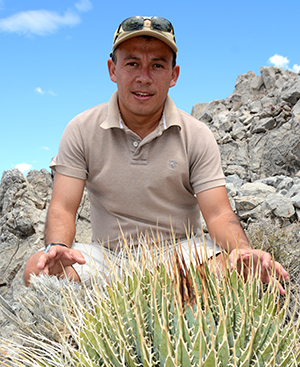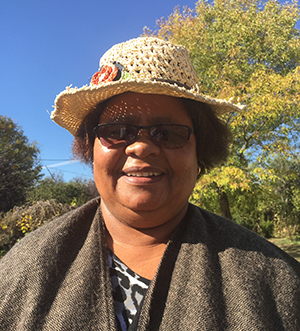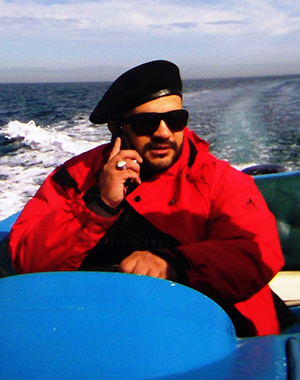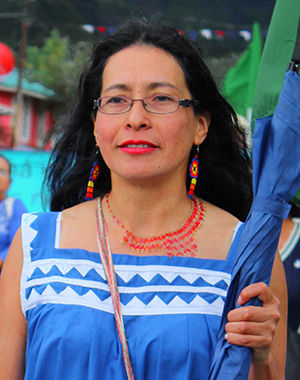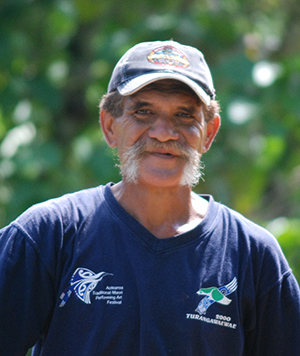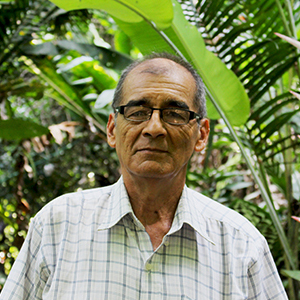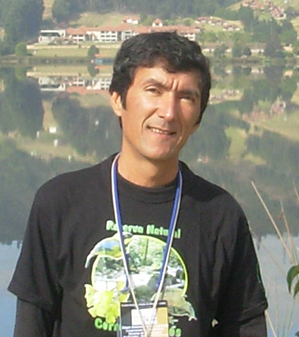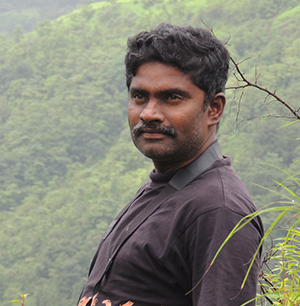ARLINGTON, VIRIGNIA, USA—The Critical Ecosystem Partnership Fund (CEPF) is celebrating its 15th anniversary by recognizing conservationists as “Hotspot Heroes.”
CEPF selected the Heroes from among the fund’s more than 2,000 grantee organizations around the globe. The Hotspot Heroes and the nongovernmental organizations they work for have made outstanding contributions to the conservation of biodiversity hotspots—the world’s most biologically diverse yet threatened terrestrial regions. The Heroes exemplify the kinds of dedicated, dynamic people who work with CEPF to make certain vital ecosystems can continue to provide clean air, fresh water, healthy soils, sustainable livelihoods, resilience to climate change and much more.
CEPF is a joint initiative of l'Agence Française de Développement, Conservation International, the European Union, the Global Environment Facility, the Government of Japan, the MacArthur Foundation and the World Bank. CEPF provides grants to civil society organizations that are working to conserve the biodiversity hotspots in developing countries and countries with economies in transition.
CEPF honored the Hotspot Heroes at a reception on Sunday, September 4, at the Bishop Museum in Honolulu, Hawaii, in conjunction with the World Conservation Congress held by the International Union for Conservation of Nature (IUCN), which took place September 1–10 in Honolulu. View the schedule of CEPF Participation in the IUCN World Conservation Congress. Read more about the event that celebrated the Hotspot Heroes.
Watch a video highlighting the successes of the Hotspot Heroes.
CEPF’s Hotspot Heroes
Caribbean Islands Biodiversity Hotspot
Sesar Rodriguez, executive director, El Consorcio Ambiental Dominicano (CAD), Dominican Republic
Sesar Rodriguez is an agronomist with expertise in natural resource management. He earned a degree in environmental management and has dedicated his career to the preservation of biodiversity and the conservation of resources. After working as the director of the Department of Horticulture for the Dominican Republic’s National Botanic Garden, he became the executive director of El Consorcio Ambiental Dominicano (CAD), an organization that develops creative policy solutions to protect the environment and improve the quality of life for rural communities. He also served as president of the Central American and Caribbean Federation of Beekeepers from 2014 to 2015.
Under Mr. Rodriguez’s leadership, CAD used a grant from CEPF to help create the Dominican Republic’s first private protected area, Reserva Privada El Zorzal. The establishment of this reserve also gave rise to the country’s first carbon credit project. CAD partnered with Plan Vivo, which certifies the carbon rights to trees in the reserve and in buffer zones around the reserve. This allows farmers to generate income by helping to preserve the natural habitat. The carbon credits are sold in a bundle with organic cacao grown in the reserve, allowing small-scale chocolatiers to establish sustainable, ethically sourced manufacturing processes.
East Melanesian Islands Biodiversity Hotspot
David Boseto, co-director, Ecological Solutions, Solomon Islands (ESSI), Solomon Islands
David Boseto was born in the Solomon Islands. He attended the University of the South Pacific, Fiji, where he earned a bachelor’s degree, a postgraduate diploma and a master’s degree in marine science. He also attended Texas A&M University, where he earned a master’s degree in environmental science. His specialty is ichthyology—the study of fish.
Mr. Boseto co-founded Ecological Solutions, Solomon Islands (ESSI) with Patrick Pikacha in 2012, and the two men continue to lead the organization. Mr. Boseto and ESSI, with support from CEPF, have set the foundation for a long-term, community-owned conservation initiative on Choiseul Island by working with local communities to map customary ownership of land and natural resources, and develop land-use plans that reflect cultural and biological values. Mr. Boseto has also played a leading role in other CEPF-supported initiatives in the Solomon Islands, including promoting ridges-to-reef conservation in Western Province and undertaking baseline biological surveys of the highlands of Guadalcanal as a basis for community-based conservation initiatives.
During more than 13 years of experience as a field biologist, Mr. Boseto has conducted research in the Solomon Islands, Fiji, Kosrae, Australia, New Caledonia, Japan and the United States. He is currently a sitting member of the IUCN Red List–Oceana Freshwater Fish Specialist Group.
Eastern Afromontane Biodiversity Hotspot
Milagre Nuvunga, co-founder and executive director, MICAIA, Mozambique
Milagre Nuvunga was born in Mozambique and began her career in conservation with a position as a junior officer in the Forestry and Wildlife Directorate of Mozambique’s Ministry of Agriculture. She subsequently held several positions in the Ministry of Agriculture, including director of the National Forest Research Centre and national director of Forestry and Wildlife. She also worked for the United Nations Development Programme, the United Nations Secretariat of the Intergovernmental Panel on Forests, and the Ford Foundation, before co-founding the MICAIA Foundation in Chimoio, Mozambique.MICAIA Foundation seeks to combat poverty and create sustainable livelihoods in Mozambique. To this end, the organization focuses on the four pillars of local prosperity: food security, active citizenship, natural resources and local economies. With a grant from CEPF, MICAIA implemented a project to improve resource management on the Mozambican side of the Chimanimani Mountains, working with local communities to conduct a thorough survey of species populations and distribution. The results of the surveys are informing changes to the Chimanimani Transfrontier Conservation Area Management Plan. Through this improved resource management, communities are able to lessen their impact on local ecosystems.
Himalaya Biodiversity Hotspot
Rebecca Pradhan, ecologist, Royal Society for the Protection of Nature in Bhutan (RSPN), Bhutan
Rebecca Pradhan was born in Taba, Bhutan, and an early interest in, and careful study of, nature resulted in a self-acquired expertise in local species and habitat.Her extensive knowledge of the environment led Harvard University to offer Ms. Pradhan a two-term botany fellowship with its Arnold Arboretum. From 1985 to 1999, she worked as the head of the Herbarium and Forestry Research Library for the Royal Government of Bhutan’s Department of Forestry. In 2000 she joined the Royal Society for Protection of Nature (RSPN), Bhutan’s leading environmental nongovernmental organization, where she is a senior ecologist. RSPN focuses on environmental education and advocacy, sustainable livelihoods, research and emerging issues like climate change, solid waste and water.
In her role with RSPN, Ms. Pradhan leverages her knowledge of Himalayan flora and fauna to develop and implement effective methods of conservation, such as community-level ecological education. Ms. Pradhan and the RSPN team used a grant from CEPF to collaborate with communities along the Phochu River in the Punakha Region of Bhutan to protect the last remaining habitat for the Critically Endangered white-bellied heron (Ardea insignis): one of the rarest birds in Asia.
Ms. Pradhan has authored multiple books, including “Wild Rhododendrons of Bhutan” and “Threatened Birds in Bhutan.”
Indo-Burma Biodiveristy Hotspot
Dao Thi Nga, director, the Center for Water Resources Conservation and Development (WARECOD), Vietnam
Dao Thi Nga was born in Vietnam and earned a Ph.D. in human geography from York University in Toronto. She is the co-founder and director of the Center for Water Resources Conservation and Development (WARECOD), a Vietnamese nongovernmental organization that focuses on water resources in the country, primarily rivers. The aim of the organization is to protect not only the biodiversity of water resources, but also the well-being of the communities that depend on those ecosystems.As director of WARECOD, Dr. Nga has been instrumental in piloting community co-management of fisheries in Vietnam, working with indigenous peoples and other local communities in the north of the country to develop working models that can inform policy development and lead to wider replication. Since 2009, these efforts have been supported by CEPF and resulted in the establishment of demonstration models and the adoption of regulations on co-management of aquatic resources by the Tuyen Quang Provincial Government. A feature of WARECOD’s work has been innovative outreach activities, such as cookery competitions for fishing families and interactive plays.
Madagascar and Indian Ocean Islands Biodiversity Hotspot
Andry Petignat, manager, Arboretum d’Antsokay, Madagascar
Andry Petignat grew up and studied in Toliara, Madagascar, where his father, amatuer botanist Hermann Petignat, founded the Antsokay Arboretum in the early 1980s. Andry Petignat followed in his father’s footsteps, taking over management of the arboretum in 2003.The arboretum focuses on the conservation of plants from the spiny forest of southwestern Madagascar. There are more than 900 species of plants in the arboretum’s collection, 90 percent of which are found only in southwest Madagascar, and 80 percent of which have medicinal properties. The arboretum’s collection features a wide variety of endemic succulent plant species, including many that are endangered.
Madagascar’s spiny forests receive relatively little attention from conservation organizations compared to the areas with large populations of charismatic fauna such as lemurs. In fact, only 3 percent of the region is protected. Mr. Petignat has dedicated himself to protecting the flora of the spiny forests and raising awareness about this increasingly fragmented region. The arboretum used CEPF grants to implement education initiatives, including creating an education center, developing activities for school children and teachers at the arboretum, and recruiting qualified local educators and communicators to raise awareness about the importance of plant diversity and sustainable natural resources management. The arboretum is currently implementing a project to foster ecotourism, linking the private sector and local communities in the Toliara region.
Mr. Petignat is co-author of “Guide des plantes succulentes du sud-ouest de Madagascar,” “Baobabs de Madagascar, les arbres à l’envers” and “Baobabs of the World.”
Maputaland-Pondoland-Albany Biodiversity Hotspot
Sissie Matela, director, Environmental and Rural Solutions (ERS), South Africa
Sissie Matela was raised in Lesotho and South Africa. She studied for her bachelor’s degree in environmental science at the National University of Lesotho, and earned her master’s degree in agronomy and soil science from the University of Hawaii at Manoa. In 2002, she co-founded the South African nongovernmental organization Environmental and Rural Solutions (ERS) and serves as the organization’s director.In addition to her management role at ERS, Ms. Matela has worked as an ecotourism specialist, development facilitator and university lecturer. She has also published several journal articles, but her passion is developing and disseminating educational materials. She accomplishes this by listening to stories from rural communities about transforming environments and changing livelihoods, then breaking those stories down into simple concepts that can be communicated to people with limited literacy to address a range of problems. During the last five years, she has worked with communal livestock farming communities along the Drakensberg Mountains in South Africa to integrate traditional water catchment, land and livestock management techniques with research-based methods. CEPF grants have supported these efforts.
Mediterranean Basin Biodiversity Hotspot
Ahmed Ghedira, president, Notre Grand Bleu, Tunisia
Ahmed Ghedira is a co-founder of Notre Grand Bleu, a Tunisian nongovernmental organization that works to protect marine wildlife throughout the Mediterranean from the impact of human behaviors. On Tunisia’s Kuriat Island, Mr. Ghedira and Notre Grand Bleu have established a site management committee that partners with local fishermen and other stakeholders to prevent illegal fishing and other behaviors that degrade the island’s marine ecosystems. CEPF grant funding has supported Notre Grand Bleu in this and other activities related to establishing the organization as an effective local partner for the National Agency for the Protection of Coastal Zones to implement the management plan for the future marine protected area at Kuriat Island.Mr. Ghedira was born in Monastir, Tunisia. He earned his undergraduate degree from the Higher School of Technical Sciences of Tunis, and his master’s degree in electrical engineering from the National School of Engineers of Sousse. After graduating, he began teaching at Lycée Bourguiba de Monastir, where he continues to serve as an instructor for high-level electrical engineering classes.
Mr. Ghedira is a member of the governorate of Monastir’s Advisory Regional Committee of Aquaculture Projects as well as the Regional Committee of Crisis and Marine Pollution Incidents.
Mesoamerica Biodiversity Hotspot
Damaris Sanchez, project manager, el Fundación para el Desarrollo Integral, Comunitario y Conservación de Ecosistemas en Panamá (FUNDICCEP), Panama
The wife and daughter of farmers located along the buffer zone of La Amistad Biosphere Reserve in Panama, Damaris Sanchez has been a grassroots environmental leader for more than 25 years. As project director for the Fundación para el Desarrollo Integral, Comunitario y Conservación de Ecosistemas en Panamá (FUNDICCEP), Ms. Sanchez has built on her degrees in management, statistics and computer science to work with a broad range of stakeholders to show how they can benefit from sustainable agriculture and development while protecting the biodiversity of La Amistad.With CEPF support, Ms. Sanchez organized a network of eight environmental groups to help communities promote ecotourism, environmental education, improved water resource management, and sustainable agriculture in benefit of the biodiversity and people of La Amistad. Her accomplishments include managing a conservation coffee strategy for the La Amistad buffer zone that helped previously struggling coffee farmers triple their income. As a result, the farmers no longer felt the need to expand their farms into La Amistad Reserve, and they could afford to send their children to high school.
Ms. Sanchez has been at the forefront of several campaigns to stop development projects that threatened La Amistad. Under her leadership, the environmental community of Panama achieved an important milestone when efforts led by a hotel owner to end protections for 2,000 hectares in the La Amistad Biosphere Reserve were defeated. Ms Sanchez also has been at the forefront of efforts to raise awareness of the negative environmental and social impacts related to the construction of more than 60 dams in the La Amistad watershed.
Mountains of Southwest China Biodiversity Hotspot
Lu Zhi, founder, Shan Shui Conservation Center, China
Lu Zhi was born in China and studied at Peking University, earning a Ph.D. in giant panda conservation in Qinling. She is currently a professor of conservation biology at Peking University and the executive director of the Peking University Center for Nature and Society. She has written five books on conservation biology, and her articles and photographs have been featured in National Geographic magazine.In her position as the head of Shan Shui Conservation Center, Dr. Zhi helped conceptualize and implement a series of CEPF-funded initiatives that demonstrated “Community Conserved Areas,” conservation agreements and other approaches for community-based conservation in the Mountains of Southwest China Hotspot. By empowering communities to protect areas with a high level of biodiversity, Shan Shui put responsibility for conservation of important ecosystems in the hands of those who care most about them.
In addition to demonstrating successful models on the ground, Shan Shui has had success in amplifying these approaches by promoting their adoption into local government policies. Most notably, an incentive-based model for community conservation of non-commercial forest was adopted across 700,000 hectares of collective forest land in Lixian County of Sichuan Province. Decision makers from other provinces and the central government were exposed to this and other models through study tours, conferences and the production of a book of case studies. Such activities emphasized the relevance of these models to the implementation of national policies on ecological compensation.
Polynesia-Micronesia Biodiversity Hotspot
George Mateariki, Cook Islands Natural Heritage Trust, Cook Islands
George Mateariki, known to many as “Birdman George,” was born and raised on the island of Atiu in the Cook Islands. He works for the Takitumu Conservation Area, giving bird tours and protecting a population of Raratonga monarchs (Pomarea dimidiata), a Cook Islands-native bird species that is categorized as Vulnerable on the IUCN RedList of Endangered Species and was introduced to Atiu between 2001 and 2003. Mr. Mateariki is also responsible for keeping Atiu free of non-native ship rats (Rattus rattus) to protect native species.In addition, Mr. Mateariki works for the Cook Islands Natural Heritage Trust, leading an eradication program that aims to eliminate the non-native invasive common myna bird (Acridotheres tristis). Beginning in May 2009, CEPF provided the Cook Islands Natural Heritage Trust with a grant to help eradicate myna from Atiu, where they numbered around 6,000 at the time. The birds had been attacking a population of 23 Endangered Rimatara lorikeets (Vini kuhlii), a native species that the Cook Island Natural Heritage Trust had reintroduced to the island. Through Mr. Mateariki’s efforts, the Atiu community came together around the eradication of the invasive alien species. Over six years, 15,000 mynas were eliminated, 2,000 of which were trapped by Mr. Mateariki. The effort was successful: The population of myna birds on Atiu is now between five and seven.
Tropical Andes Biodiversity Hotspot
Victor Zambrano, president, Tambopata Management Committee, Peru
Victor Zambrano was born and raised in the Amazon Rainforest, in Peru’s Madre de Dios region. Growing up in a rainforest instilled in him a deep love and respect for nature. Following a 24-year career in Peru’s navy, Mr. Zambrano returned to his family’s land to find that the forest in which he played as a child had been cut down to make room for a cattle pasture. He then began the process of reforesting the land.Mr. Zambrano used his family’s property for a pilot project, turning it into a private reserve called Refugio K’erenda Homet. In the refuge, which sits on the buffer zone of the Tambopata National Reserve, methods of mixing native trees and fruit-bearing trees to maximize both profit and conservation are pioneered before being attempted on a larger scale. His efforts have resulted in the planting of 20,000 trees.
In addition to improving connectivity of native forest through a cooperative agreement with his neighbors, Mr. Zambrano has brought together indigenous people, farmers and environmental organizations to keep illegal gold mining, and the environmental destruction it brings, out of the buffer zones of the reserve. His efforts resulted in significant reductions in gold mining in the area and increased awareness of the gold mining problem at the national government level. Despite receiving death threats for his conservation efforts, he continues to leverage CEPF funding to protect forest land.
Mr. Zambrano is also the 2016 winner of the National Geographic Society/Buffett Award for Leadership in Latin American Conservation.
Tumbes-Chocó-Magdalena Biodiversity Hotspot
Cesar Franco Laverde, co-founder and director, Serraniagua, Colombia
Cesar Antonio Franco Laverde has degrees in chemical engineering and senior management in rural tourism from Universidad de Buenos Aires in Argentina, as well as a degree in formulation and management of complex environmental projects from Universidad de Valle in Cali, Colombia. He is co-founder and director of Serraniagua, a grassroots environmental organization that formed out of an effort by local farmers in Colombia to buy a plot of land that a logging company was attempting to purchase in the heart of the Serranía de los Paraguas, a Key Biodiversity Area in the Tropical Andes Hotspot.Serraniagua used grants from CEPF to strengthen the network of local farmers, identify and promote sustainable development practices, and improve the connectivity between protected areas. Farmers received incentives to keep sections of their land undeveloped, providing not only uninterrupted forest cover, but also watershed connectivity. The farmers are able to do this through strategic planting of sustainable agricultural products that are certified through a local process. This provides the income needed to reserve parts of their land without jeopardizing their livelihoods. Serraniagua has helped establish the Serranía de los Paraguas Network of Private Reserves as one of the most extensive of such networks in Colombia.
Serraniagua also established an educational program for member landowners and developed a commercial strategy for sustainable products and services such as specialty coffees, organic sugarloaf, peach-palm, traditional crafts and ecotourism. Reaching an estimated 7,500 small producers directly through outreach work and 20,000 people through communications campaigns in the local and national media, the network helped secure the conservation landscape between Serranía de los Paraguas and the Parque Nacional Natural Tatamá.
Western Ghats and Sri Lanka Biodiversity Hotspot
Subbaiah Bharathidasan, co-founder and secretary, Arulagam, India
Subbaiah Bharathidasan was born in India and has been involved with the conservation movement since 1992. He started out as an environmental journalist, and later served as a renewable energy advocate and a technical adviser at a government botanical nursery. He has written several Tamil-language books about the environment, and he regularly contributes to wildlife and environmental magazines. He is also one of the founders and the current secretary of Arulagam, a nonprofit organization that seeks to conserve nature for the benefit of all living things.With support from a series of CEPF grants dating back to 2009, Arulagam established a program to protect vultures in Tamil Nadu State. Vulture populations had fallen sharply due to use of diclofenac (an anti-inflammatory drug) by veterinarians and cattle owners. Vultures are exposed when they feed on carcasses of livestock treated with the drug. This has caused a 95 percent drop in populations across Indian vultures of the genus Gyps. To save the vultures, Arulagam is working to completely eliminate diclofenac from the birds’ food chain and take other steps to improve the status of vultures. The organization is accomplishing this by influencing policies that make the sale of diclofenac more difficult; withdrawing another harmful drug Ketoprofen from Tamil Nadu with the help of the Animal Husbandry Department; and raising awareness of the vulture-safe drug meloxicam as an alternative. Arulagam also is educating local communities about the importance of vultures to India’s ecosystems, and engaging local communities in identifying and protecting vulture nesting areas with the guidance of the Tamil Nadu State Forest Department.
The Hotspot Heroes are among the many individuals working with civil society organizations around the globe to protect the world’s biodiversity hotspots and the vital services the hotspot ecosystems provide. CEPF is proud of the more than 2,000 civil society entities it has funded since 2001, and what they have accomplished with that support. With more than $196 million in funds from CEPF, grantees have leveraged an additional US$350 million to conserve the world’s biodiversity hotspots. CEPF grantee organizations also have:
- Established more than 13 million hectares of new or expanded protected area.
- Improved management of more than 37 million hectares of globally important ecosystems.
- Conducted conservation activities that benefited more than 1,200 globally threatened species.
- Implemented projects that directly benefited more than 2,300 local communities in the biodiversity hotspots.
- Influenced more than 77 policies, plans or laws to reflect environmental concerns.
For more information on CEPF and its grantees, visit www.cepf.net, or see CEPF’s Facebook, Twitter or YouTube accounts.
Contact:
Julie Shaw, jshaw@cepf.net, 703-341-2457





